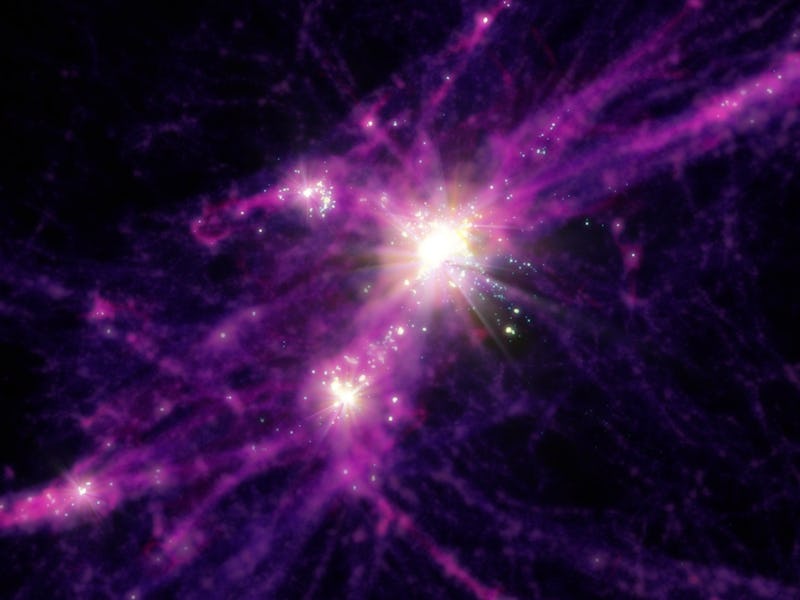Webb Telescope Reveals An Ancient Universe Packed with Oddly-Bright Galaxies, Puzzling Astronomers
Astronomers are seeing the cosmos as it once was.

Mysterious light appears in the images pulled from the depths of the universe using the James Webb Space Telescope (JWST). And now, it finally has an explanation.
JWST, the next-generation observatory from NASA, the European Space Agency, and the Canadian Space Agency, is able to view infrared light like never before. Infrared reveals visible light that has been stretched by the universe as it expands and which has poured out from the farthest reaches of space across billions of light-years. Once this light reaches Earth, astronomers can see the cosmos as it once was.
They haven't seen anything like JWST’s images before, which first went public in July 2022. But, they had good guesses about what they’d find.
There are more than 20,000 galaxies in this field, observed by the NASA/ESA/CSA James Webb Space Telescope view when it looked between the Pisces and Andromeda constellations.
However, one particular characteristic of the ancient galaxies appearing before them left many stumped. Although astronomers know very little about Cosmic Dawn, the 100 million years to 1 billion years after the Big Bang, when the universe sprouted its first stars and galaxies, they did not expect to see galaxies shining as bright as they see in the telescopic images. Rohan Naidu, a NASA Hubble Fellow at the Massachusetts Institute of Technology, even told Quanta Magazine that the galaxies were “stupidly bright.”
Why are the ancient galaxies so bright?
Their luminosities were so shocking that some physicists questioned the standard model of cosmology, which describes how the universe has evolved since the Big Bang.
The issue is that, usually, bright galaxies mean big galaxies. “But because these galaxies formed at cosmic dawn, not enough time has passed since the Big Bang,” Claude-André Faucher-Giguère, associate professor of physics and astronomy at Northwestern University in Illinois and an author of a new paper, says in a statement describing the study. “How could these massive galaxies assemble so quickly?”
A research team led by Guochao Sun, a postdoctoral fellow at Northwestern, found an explanation: bursts of formation. They published their findings on Tuesday in the journal Astrophysical Journal Letters.
“If star formation happens in bursts, it will emit flashes of light. That is why we see several very bright galaxies,” Sun said in a Northwestern University statement describing the study.
The young galaxies, which the statement called “too bright, too massive, and too mature to have formed so soon after the Big Bang,” may just plain and simply be bursting with new stars.
Unlike modern galaxies, which form stars at a steady rate, the early galaxies seed a process known as bursty star formation. “So-called bursty star formation occurs when stars form in an alternating pattern — many stars at once, followed by millions of years of very few new stars and then many stars again,” according to the statement.
Now that the JWST imagery begins to make more sense, astronomers can use its sensitive instruments to investigate other cosmic mysteries.
This article was originally published on